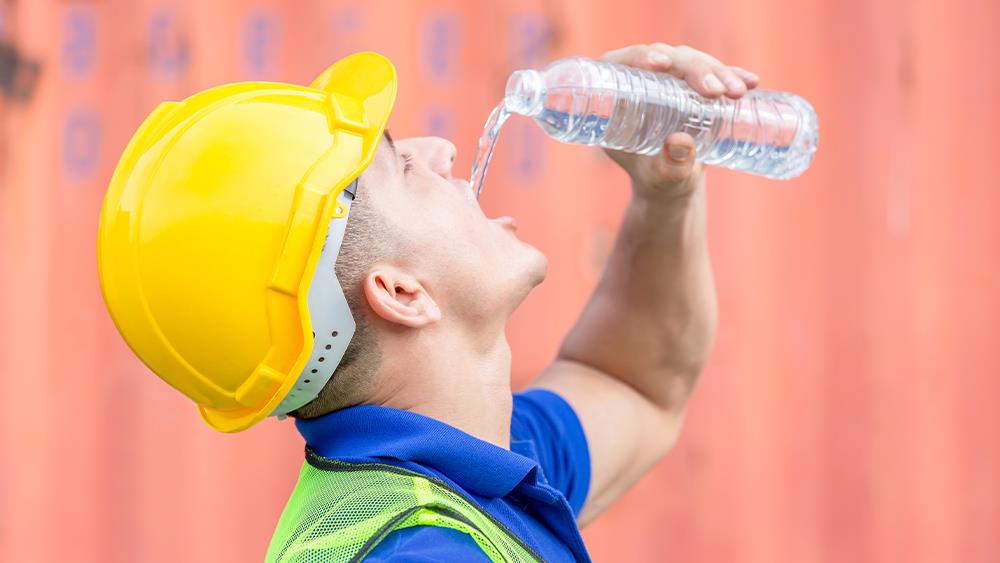

Garry Gregory, Packed Products Director at Tarmac, shares timely guidance on how to work safely and effectively during the warmest months of the year.
As the UK is in the grip of its fourth heatwave this year, recent data from the NHS reveal that visits to its heat exhaustion and heatstroke advice pages surged by nearly 200% during the amber heat-health alerts issued across England earlier this summer. This reflects a growing concern about extreme temperatures and the risks they pose to outdoor workers.
For tradespeople working with concrete, mortar, and cement, the risks aren’t limited to health alone. Hot weather can have a serious impact on material performance, curing times, and site efficiency. That is why merchants have an important role to play in guiding their customers through the season with sound, practical advice. And some of this can also apply to merchants staff, particularly those working in the yard.
Adapting to a warming climate
The UK’s climate is evolving. Gone are the days when 30°C days were rare. Now, we are seeing recurring heatwaves, with some regions experiencing consecutive days of high temperatures and humidity. The 2022 heatwave, which saw the mercury rise above 40°C for the first time in UK history, was a clear turning point. Since then, construction sites have been adapting – but there is still work to be done.
With an increasing number of amber and yellow heat-health alerts being issued each summer, awareness is growing, but planning remains key. Knowing how to prepare for high temperatures can help avoid costly errors, rework, and, most importantly, health risks.
Perfecting the curing process
Hot weather has a particularly harsh impact on the curing of concrete and mortar. The process of curing involves a chemical reaction between cement and water that allows the mix to set and gain strength. If this reaction is disrupted, usually by rapid water evaporation, the final product can be significantly compromised.
There are three main environmental factors to consider: temperature, wind speed, and humidity. High temperatures obviously increase the rate of evaporation, which can cause the mix to dry too quickly. This can lead to shrinkage, cracking, and a powdery or porous surface – all signs of weakened material that may not stand up to long-term use.
To prevent this, it is important to ensure the mix retains enough moisture as it sets. Here are a advices merchants can pass on to their customers:
Protecting equipment from heat
The sun doesn’t just affect the materials – it can also damage tools, batteries, and construction equipment.
Tools left out in direct sunlight for long periods of time are at risk of overheating or warping. This is particularly true of sensitive measuring tools, hand tools with plastic components, and items with electronic parts.
Battery performance can degrade quickly in extreme heat. Make sure equipment batteries are charged and stored properly, and replace any showing signs of swelling or rapid power loss.
Bricks and blocks, when overheated or dried out, can absorb too much moisture from the mortar during laying. Keeping them shaded and lightly spraying with water before use can help ensure proper bonding.
Encourage customers to take proactive measures, such as setting up temporary shaded storage or rotating equipment in and out of sunlight, to avoid unnecessary delays or equipment failures.
Looking after people
Amid all the practical advice, the most important thing is personal safety. Heat-related illnesses, such as heat exhaustion and heatstroke, are serious and can develop quickly.
To keep teams safe:
A safer summer
Helping customers understand summer construction work isn’t just good service, it is an opportunity to build trust and demonstrate your value as a merchant. With proper planning, appropriate material handling, and good self-care practices, building through the summer can continue safely and successfully.